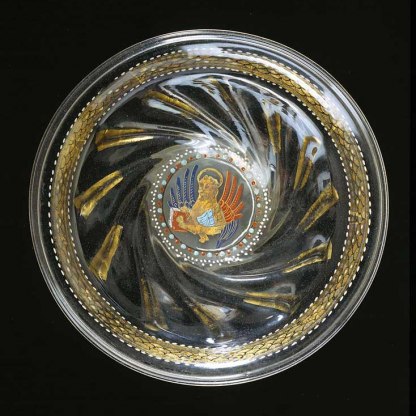Glasses
The use of glass at the dining table became increasingly popular in the sixteenth century. But the customs were not quite those that we know today.
As for drink it is usually filled in pots, goblets, jugs, bowls of silver in noblemen’s houses; also in fine Venice glasses of all forms: all which notwithstanding are seldom set on the table, but each one, as necessity urgeth, calleth for a cup of such drink as him listeth to have, so that, when he has tasted of it, he delivereth the cup again to some of the standers by, who, making it clean by pouring out the drink that remaineth, restoreth it to the cupboard from whence he fetched the same. By this device ... some tippling is furthermore cut off.
William Harrison, A Description of England, 1586
The Fitzwilliam's goblet seems to celebrate a wedding, and its survival over four and a half centuries is probably down to its not having been used at table. Like fine commemorative cut glass today, it was meant as a display piece, and it continued to be used as such. A record of its first arrival in the Fitzwilliam Museum says that it came from the 'unpretentious home of a cider-maker in east Devon. It was known as the "sporting trophy" and used annually for the wild daffodils which grow profusely up the valley.'
Other highlight objects you might like
Other pathways and stories you might like
Sign up to our emails
Be the first to hear about our news, exhibitions, events and more…






